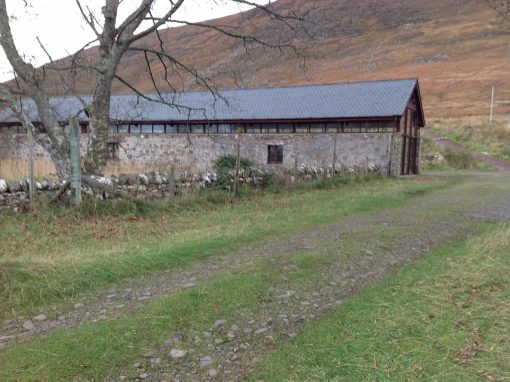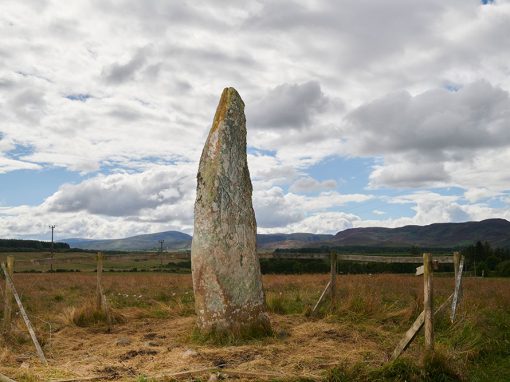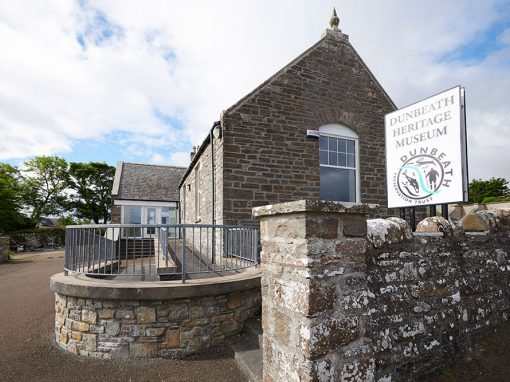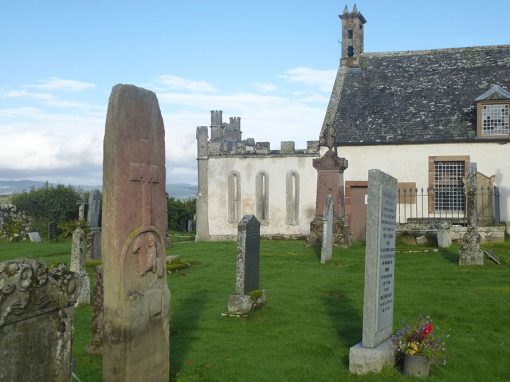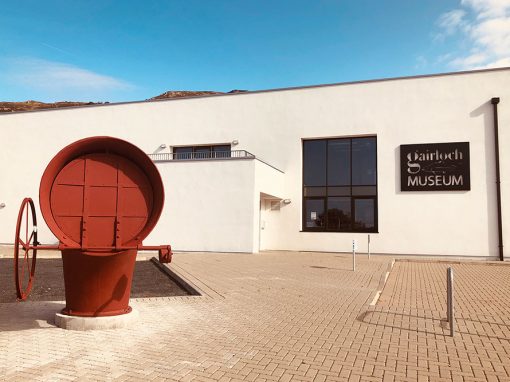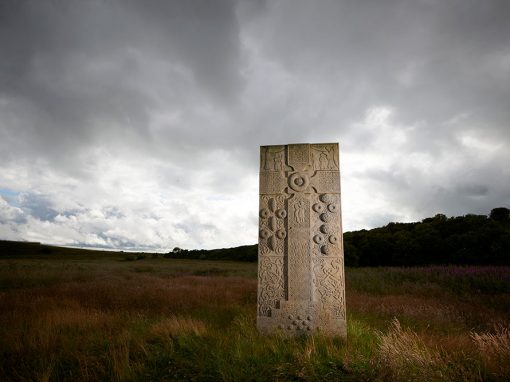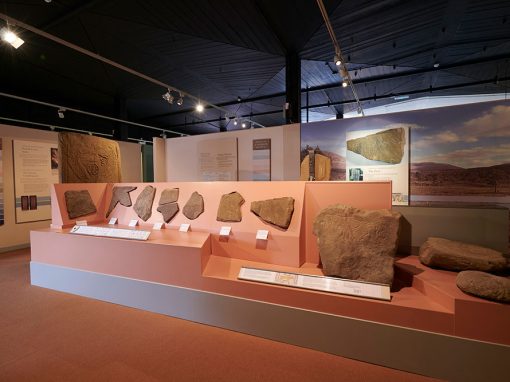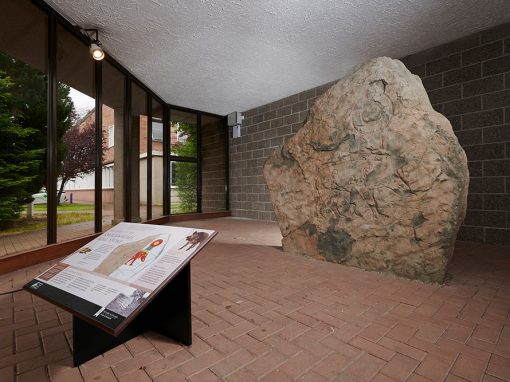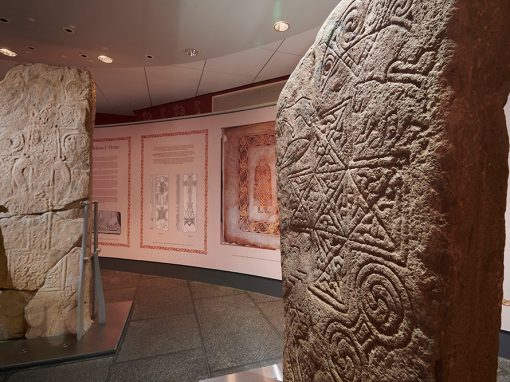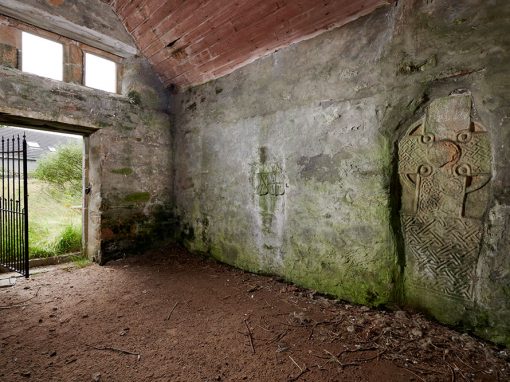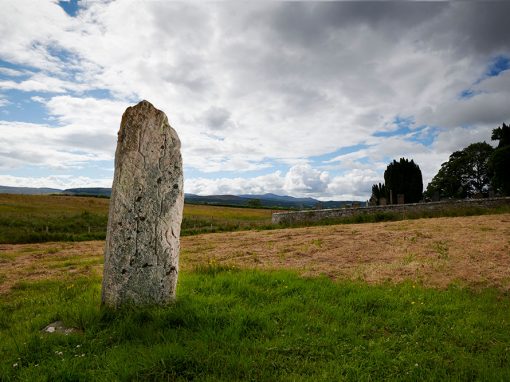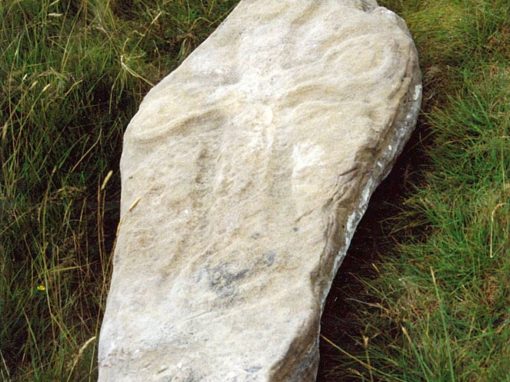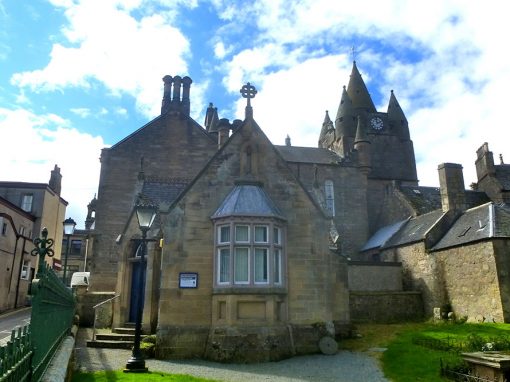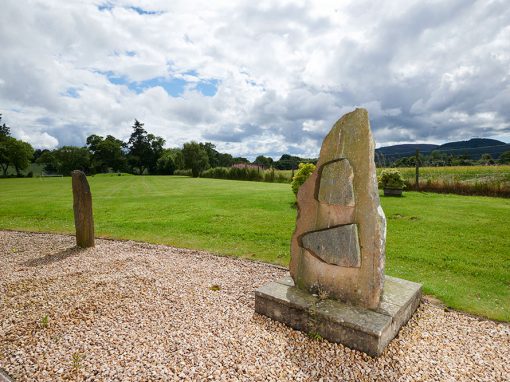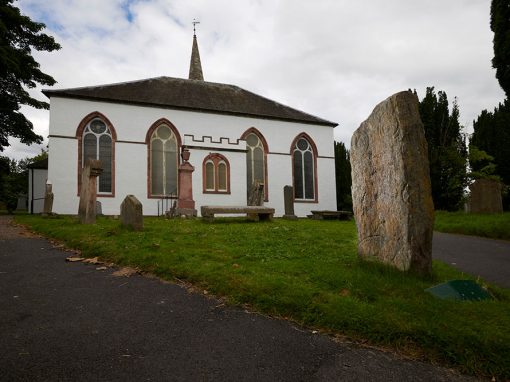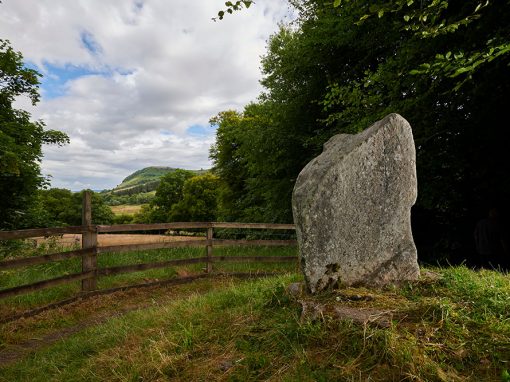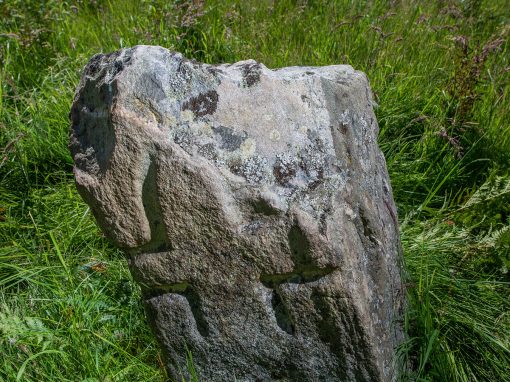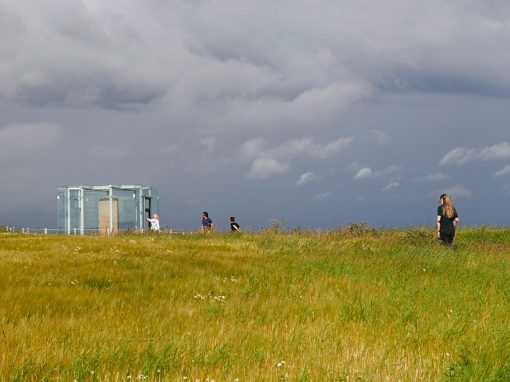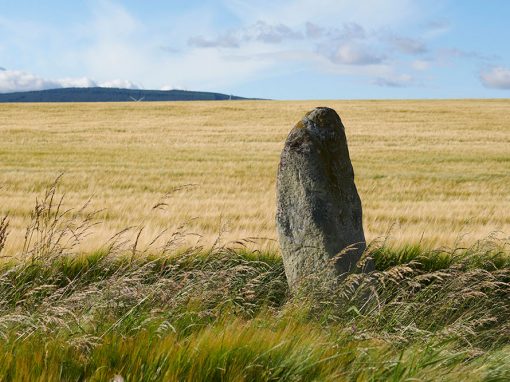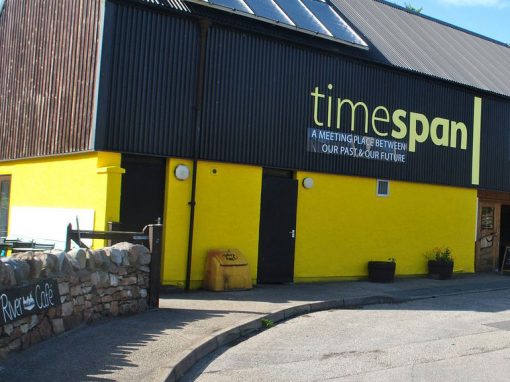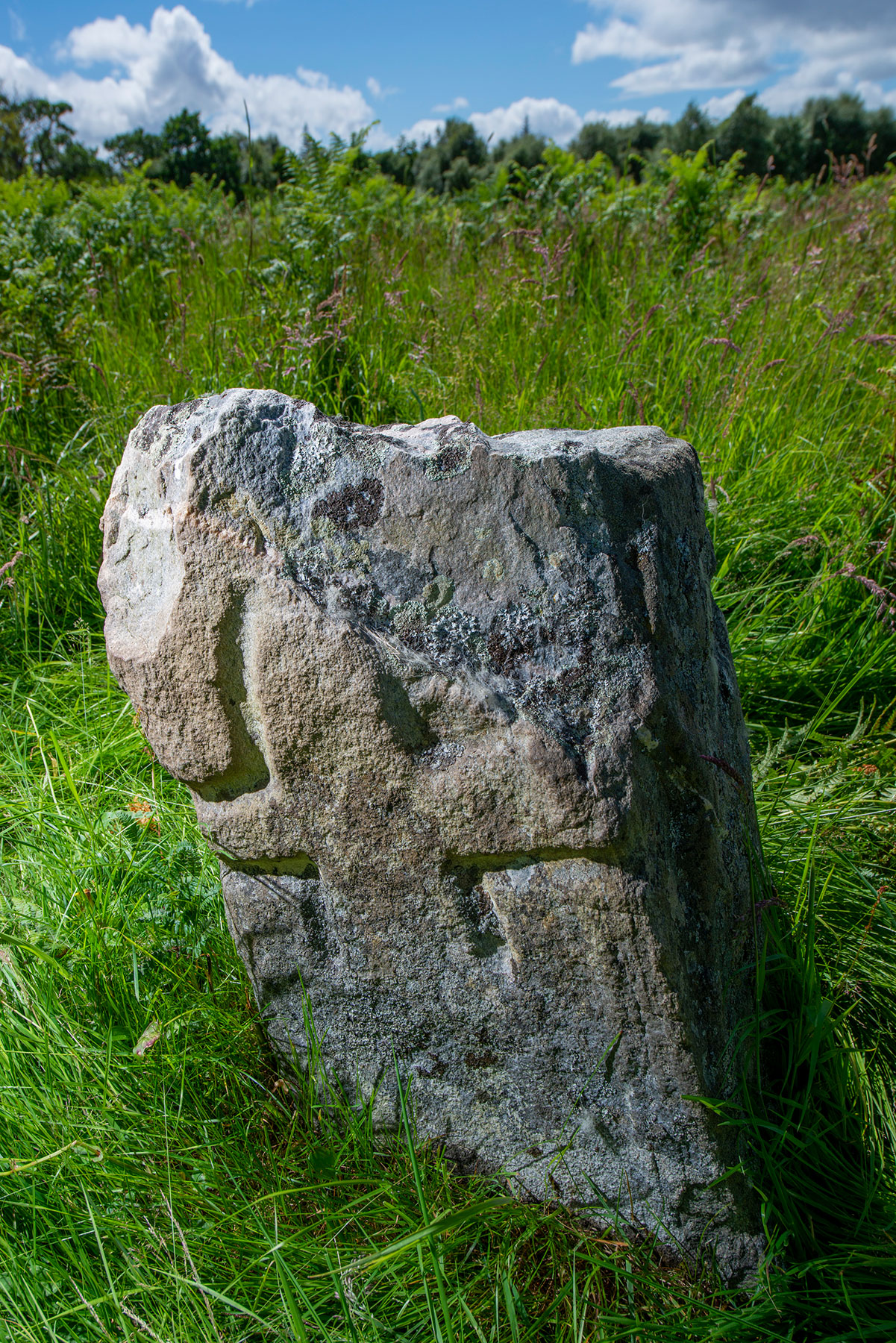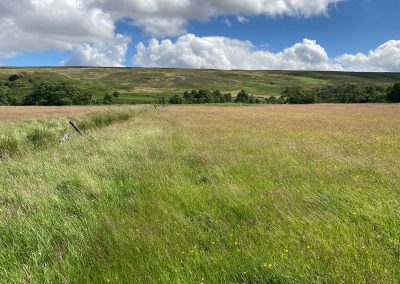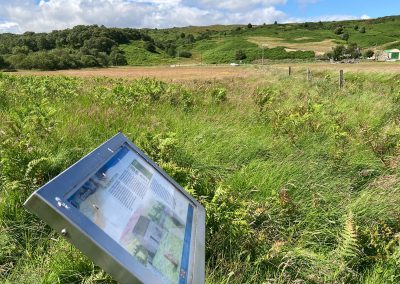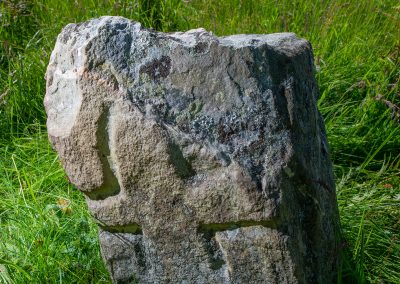The Red Priest’s Stone
Location
B871, Skail,
Strathnaver, Sutherland,
Scotland, KW11 6UA
Accessibility and amenities
Not fully accessible.
See full details below.
Entry: free
The Red Priest’s Stone
Location
B871, Skail,
Strathnaver, Sutherland,
Scotland, KW11 6UA
Accessibility and amenities
Not fully accessible.
See full details below.
The Red Priest’s Stone
Clach an t-Sagairt Ruaidh
A stone with a cross deeply incised on its northern face. Perhaps not that much to look at but it is associated with Maol Ruadh – the Red Priest (St Maelrubha), an early Christian missionary from Ireland – who died in 722AD and who is said to have established a chapel at Skail. It is linked with various stories giving fascinating glimpses into the history of Strathnaver and the wider area.
There is a small layby and interpretive panel opposite the field where the cross is situated. The stone is located about 280m from the road over rough grazing and stiles.
This site is part of the ‘Strathnaver Trail’ linking historic sites along the glen. Brochures are available locally or download from Strathnaver Museum’s website www.strathnavermuseum.org.uk
Further information
The site is linked with Maol Ruadh (642AD – 722AD), who founded a monastery in Applecross on the Highland west coast and also spent time in the Western Isles, Sutherland and Moray.
According to tradition, Maol Ruadh established a stone chapel at Skail. The Red Priest’s Stone is said to mark his burial place and is the only visible remnant of what was once an important Christian site. Although there is little in the way of physical evidence now of the chapel and burial ground, the tradition that this was a holy place has protected it through the centuries.
The Red Priest’s Stone is a single low stone with a cross deeply incised on its northern face, and may date to the 7th or 8th century AD. The stone may originally have been a girth-cross (marking the boundary of church lands and an indicator that this was a place of sanctuary). One theory is that it may have been stolen from St Duthac’s Chapel In Tain by a Clan MacKay chief’s son in 1429.
In local tradition – and very poignant in the context of the Clearances (evictions of the local population to make way for large sheep farms) in Strathnaver in the early 1800s – Maol Ruadh was said to have prophesied that the population of Strathnaver would be driven from the strath for their sins, and would not be able to return until his bones had been washed down to sea. This may be why his grave was placed on the outside of the graveyard and therefore closer to the river.
Around 1825, a local sheep farmer – who held the best land and was anxious that the people evicted during the Clearances never returned – is supposed to have constructed a protective embankment to divert the river away from the graveyard. These defences proved unsuccessful and, following a ‘great flood’, the burial ground was apparently submerged. The strath is now partially repopulated, but this process did not begin until the very beginning of the twentieth century, probably long after the flood and the death of the sheep farmer.
Another story says that the Church of St Columba at Bettyhill (now Strathnaver Museum) was built with stones from a ruined chapel at Skail. It would have required huge effort to carry the stones on foot for more than twelve miles, and, if the tale is true, it suggests that the chapel of the Red Priest at Skail was a place of great veneration.
For further details see https://her.highland.gov.uk/Monument/MHG11048
Accessibility and amenities
Layby parking
Access is gained over a wooden stile
Walking boots advised
Visit Strathnaver Museum website
Nearest amenities are at Bettyhill
Self-guided Strathnaver leaflet available locally
Or download in advance from the Strathnaver Museum website
Find more like this
